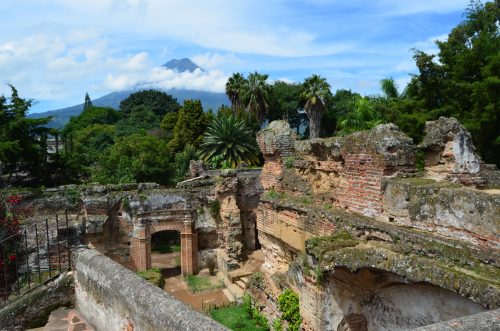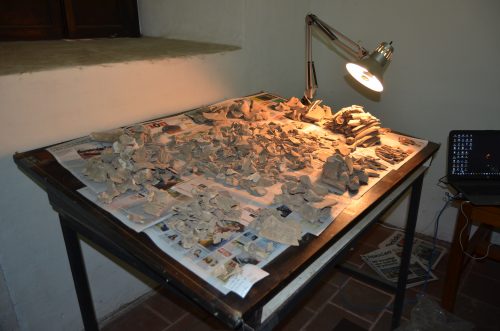What Animal Did The Europeans Bring To Mesoamerica
Project Archeologist: Nicolas Delsol

Earlier the arrival of the Europeans in the New World, native societies of Mesoamerica used very few domesticated species. They relied mainly on hunting to provide themselves with meat and other animal products. Later on the conquest of Mexico and Republic of guatemala, the Spaniards introduced livestock in neat quantities which greatly affected both the indigenous populations and the environment.
For decades, various archaeological excavations take unearthed beast bones dating from the colonial era in Guatemala, particularly at the ancient Spanish majuscule and UNESCO heritage site of Antigua, Guatemala.
During the summer of 2017, I reviewed the zooarchaeological textile curated by theConsejo Nacional para la Protección de la Antigua Guatemala. As role of this review, I identified more than half dozen,000 faunal remains from eleven colonial period archaeological sites in Antigua. I was also able to locate several unstudied collections that volition be the subject of my analysis in upcoming research sessions.
My inquiry aims at explaining the changing relationship between humans and animals during the Spanish colonization of Mesoamerica. The Spaniards introduced new economies based on domesticated species to Mesoamerican societies who had a very dissimilar relationship with the animals. Nether the Spanish economic pressure, the calibration of animal use and trade dramatically increased. I explore the extent to which domestic and wild animals were exchanged and for what reasons. Recent isotopic enquiry has shown that wild fauna and indigenous domestics were traded for elite and ritual activities prior to contact. Were domestic animals also traded for such purposes postal service-contact? Or were they immediately integrated into a European-based economic market arrangement? Beyond exploring the generation of new cultural and economic practices, my research will besides focus on folk taxonomies: did the domesticated animals belong to the same categories as the wild ones in local indigenous taxonomies? Finally, regarding the livestock itself, did its introduction to a new landscape significantly modify the biology of the animal or the population dynamics of the herds?
I trace changing frequencies of wild and domestic fauna in colonial assemblages, written report the contexts of deposition, and clarify the anatomical distribution and slaughterhouse marks to empathise the practices of brute processing. I utilize this data to reveal the transition brute use from wild to domestic, and such details as the transition in butchery practice and in the management of waste material stemming from domestic animal processing. To assess the trajectories of animal management and exchange, I will also employ stable isotope analyses that volition inform on the geographical origin of the animate being populations and their nutrition. Finally, through morphometrics study of cattle tarsal bones, I will document breed selection and contempo biogeographical adaptations in bovines.
Source: https://www.floridamuseum.ufl.edu/envarch/research/maya/antigua-guatemala/
Posted by: warelosione.blogspot.com

0 Response to "What Animal Did The Europeans Bring To Mesoamerica"
Post a Comment